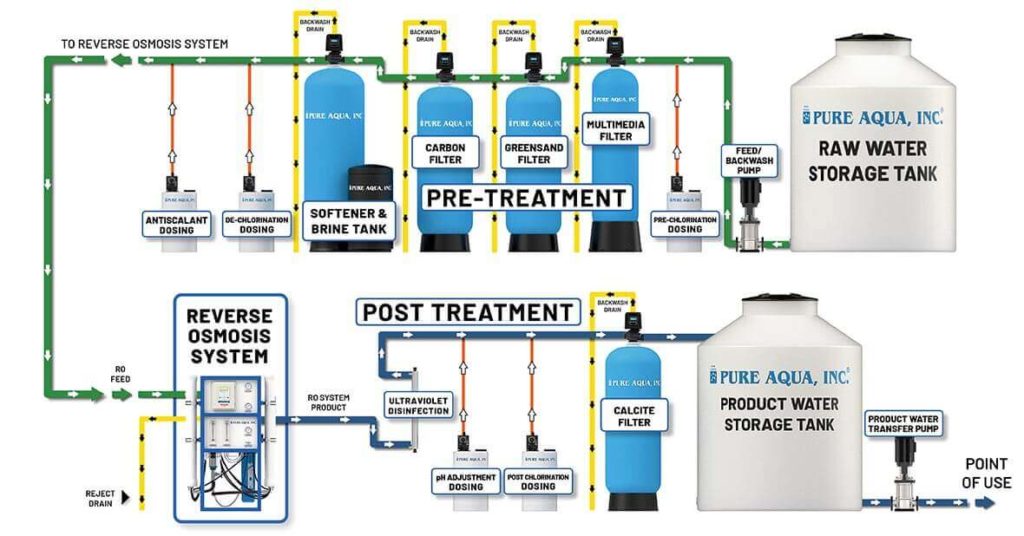Salt Intrusion and Excessive Total Dissolved Solids
The ECOsmarte system can remove up to 800 parts of Total Dissolved Solids. If the TDS reading is higher, then a reverse osmosis system is the only solution. There are a lot of kinds of solids, but the two key solids to test for — especially with saltwater intrusion — are sodium and chloride.
A Reverse Osmosis system requires pre-filtration, post-filtration, often a pH stabilizer, a holding tank, and sometimes a post filter after the holding tank. Pure water molecules are pushed through a membrane, producing a discharge of the contaminants that have been removed. Various RO systems discharge anywhere from three to ten parts of water for every one part of pure water produced.
The cleaner the incoming water, the longer the RO membrane will last before needing to be replaced. The ECOsmarte system does such an excellent job of removing everything but the salt that the pre-filters that come with most RO systems are not necessary, which saves on filter replacement costs.
The diagram below is an industrial application, but it gives a visual layout of the order for treatment. There are a number of companies that supply reverse osmosis systems — Grainger, Zoro.com, US Water Systems, Everpure US Water Patriot, and more — but I recommend https://waterguy.com.
Assuming that the initial flow rate is 10 gpm or more, for a residential application the water would flow in this order:
- ECOsmarte system
- Reverse Osmosis System
- pH stabilizer (if necessary)
- Holding tank
- Booster pump
- Optional compressed carbon block filter at the kitchen sink

